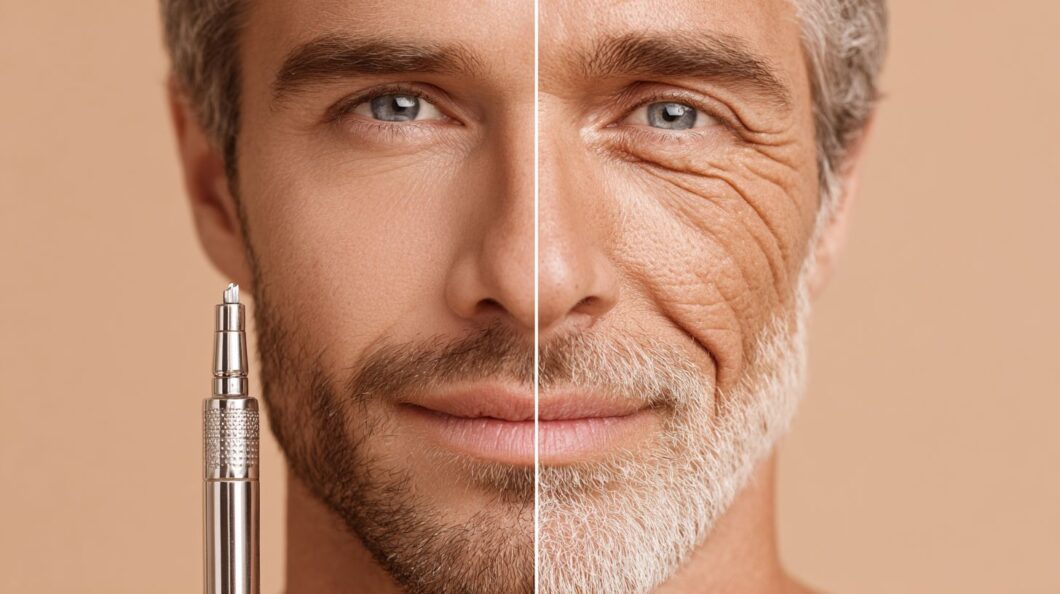Do Men’s Skin Really Age Differently? A Grooming Deep Dive Ever pondered why male skin seems to defy aging longer than women’s? Testosterone drives key differences, boosting skin thickness and collagen density for resilience, while elevated sebum levels influence oiliness and texture. This article unpacks age-related changes including hormonal influences, elasticity variations, environmental factors, and proven grooming routines-empowering you with science-backed strategies from dermatological studies to preserve youthful vitality.
Key Takeaways:
Biological Differences Between Men’s and Women’s Skin
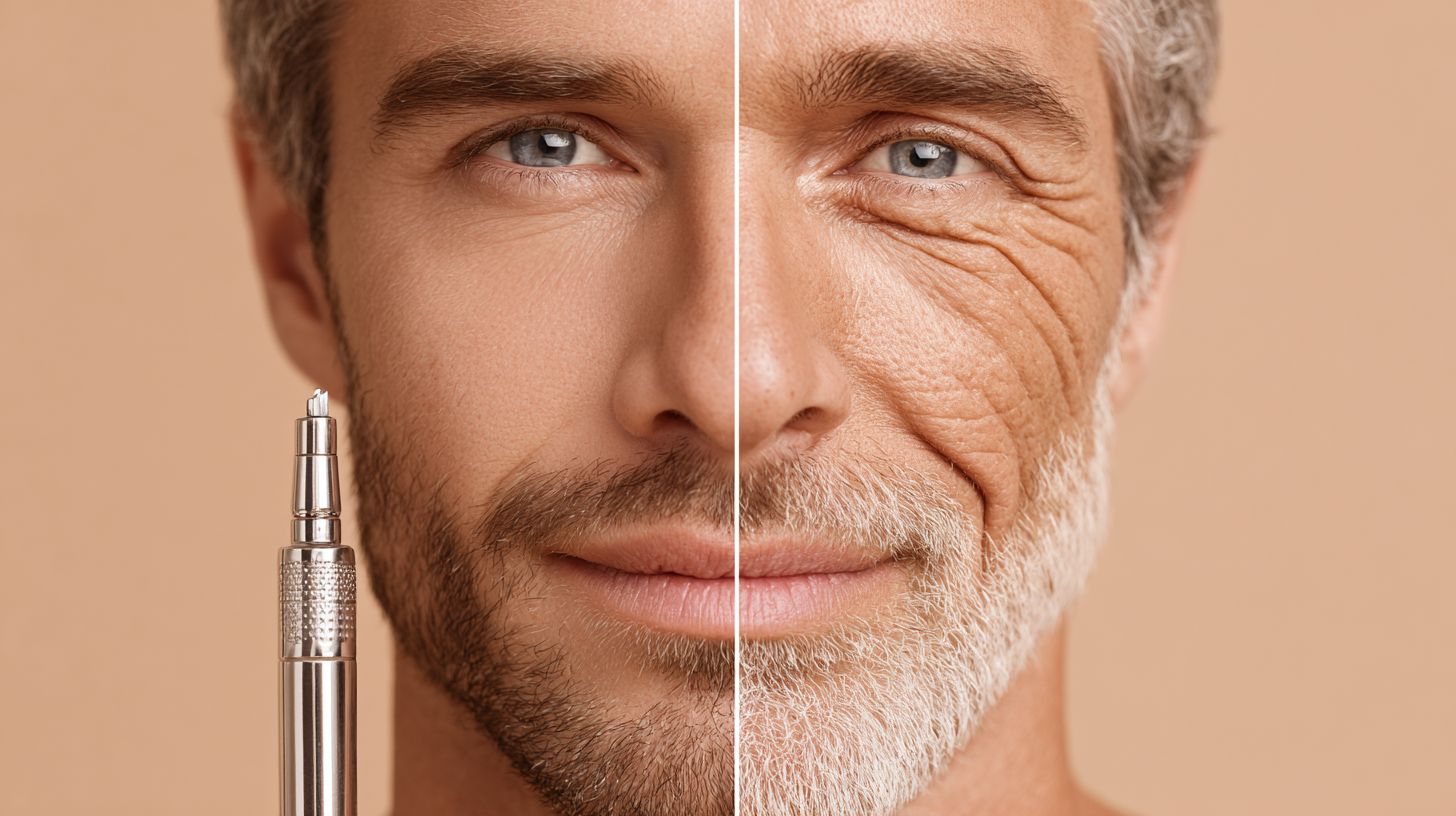
Men’s skin exhibits distinct biological characteristics compared to women’s, including a 20-25% greater thickness and elevated sebum production from sebaceous glands attributed to testosterone influence. These factors contribute to the development of larger pores and heightened oiliness, as substantiated by biophysical studies that measure the stratum corneum on the forehead and cheek.
Hormonal Influences on Aging
Hormones such as testosterone and estrogen play a significant role in influencing skin aging. In men, testosterone levels decline gradually by approximately 1% annually after the age of 30, leading to a 10-15% reduction in collagen production.
This contrasts with the more abrupt declines in women during perimenopause, as outlined in a study by S. Karger AG on the effects of androgens.
Testosterone helps maintain sebum production, which supports youthful skin hydration; however, it can accelerate sagging after age 40 by compromising the integrity of dermal fibers, according to research by Dr. Jarett Casale on the connections between endocrine function and skin health at Thomas Jefferson University.
In women, estrogen provides protection against wrinkles by enhancing hyaluronic acid levels, whereas men’s androgen-driven sebum production often results in excess oil production that clogs pores. The andropause experienced by men parallels Perimenopause and Menopause in women, causing hormonal imbalances that increase transepidermal water loss by up to 20% and thereby hastening skin dryness.
To achieve hormonal balance, incorporate dietary sources rich in zinc, such as oysters (providing 15 mg per serving) or pumpkin seeds, which help regulate excess androgens and promote collagen synthesis.
It is advisable to consult a dermatologist for personalized hormone assays and tailored recommendations.
Collagen and Elasticity Variations
Men’s collagen density is initially 25% higher than that of women, attributable to thicker skin. However, post-50, fibroblast cells in the dermal layer degrade more rapidly in men, resulting in a 30% loss of elasticity compared to 20% in women, as determined by biophysical methods evaluating sites on the volar forearm and dorsum of the hand.
This disparity is also evident in collagen production rates. Ultrasound measurements from relevant studies indicate that men’s neck skin produces 20% more collagen initially than women’s, whereas cheek areas in men exhibit a 15% faster decline after age 40, according to a 2018 report in the Journal of Investigative Dermatology involving 200 participants.
For maintenance purposes, it is recommended to incorporate peptide serums, such as Matrixyl 3000, applied in 2-3 drops nightly, to stimulate fibroblasts and enhance collagen production without reliance on hormonal factors.
Elasticity trends can be visualized through a simple line graph, with the x-axis representing age (20-70 years) and the y-axis denoting percentage retention. The curve for men declines more steeply, from 100% to 70%, while women’s curve reaches 80%.
A 2020 study published in Clinical, Cosmetic and Investigational Dermatology reported 15% gains in collagen density among men over 50 following six months of topical copper peptide application.
Environmental Factors Impacting Men’s Skin
Environmental factors, such as ultraviolet (UV) exposure, account for approximately 90% of visible skin aging in men. This exposure induces oxidative stress, which degrades the skin’s lipid barrier and results in an increase in pore size by 15-20%, according to data from the World Health Organization on environmental damage and extrinsic aging accelerators.
Key concerns include UV-induced damage leading to post-inflammatory hyperpigmentation, manifested as dark spots-often resulting from activities like weekend hikes-as documented in a 2022 study published in the Journal of Investigative Dermatology.
Pollution further compromises the skin’s pH balance and acid mantle, contributing to dryness. Similarly, smoking impairs the function of sweat glands, thereby reducing skin hydration by up to 30%, as reported by the American Academy of Dermatology.
To mitigate these effects, it is advisable to apply a broad-spectrum sunscreen with SPF 30 or higher, such as EltaMD UV Clear, generously on a daily basis. Additionally, the use of antioxidant serums containing vitamin C or Green Tea Extract can reduce oxidative stress by 25%, as demonstrated in clinical trials from Clinical, Cosmetic and Investigational Dermatology.
For example, a 45-year-old office worker successfully reversed sallow skin tone after ceasing smoking and incorporating a morning skincare routine along with weekly masks, achieving restored evenness within six months.
Common Signs of Aging in Men
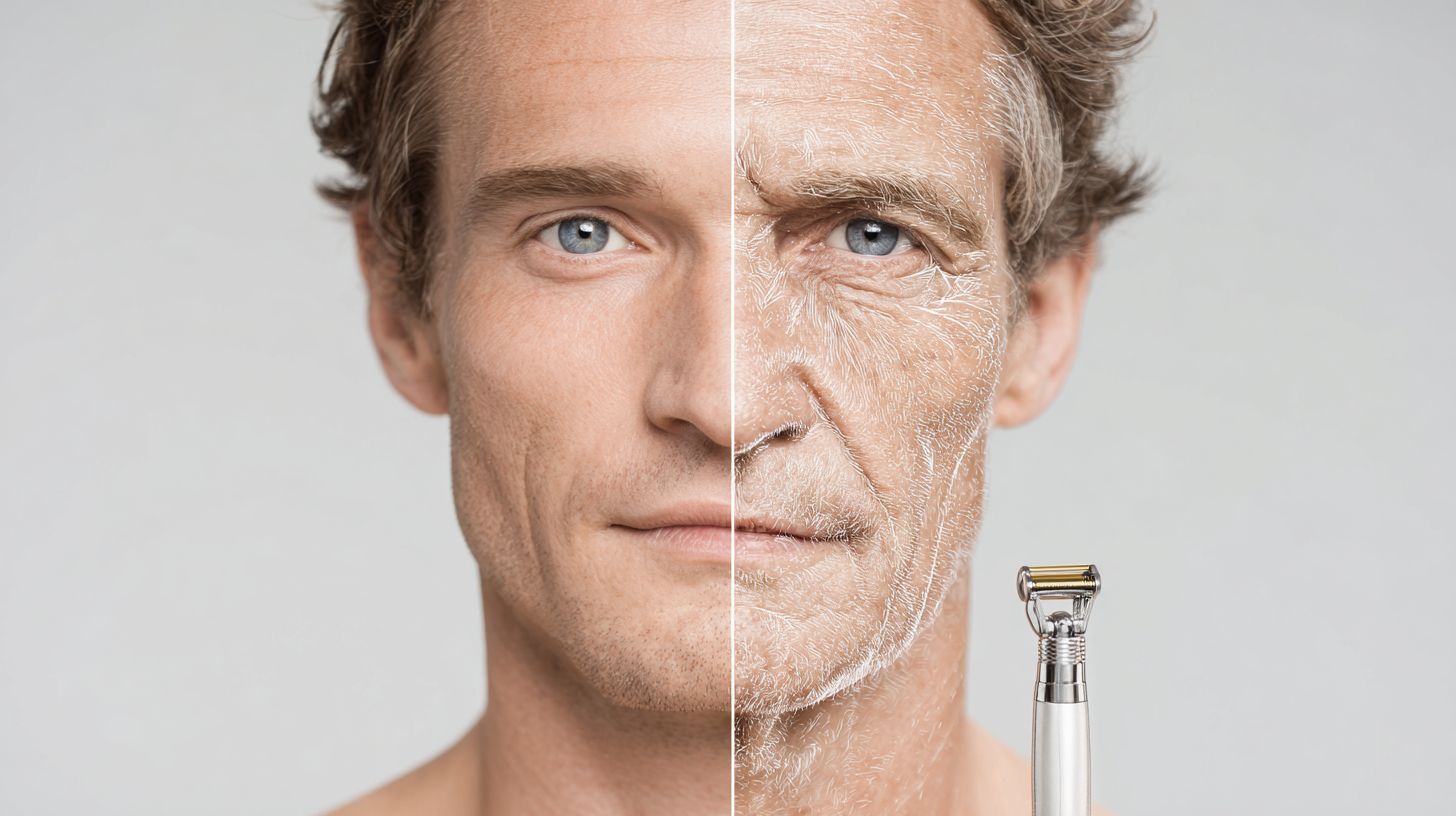
Men commonly exhibit signs of aging, such as deepened forehead wrinkles and increased transepidermal water loss (up to 50% by age 60) on the cheeks and neck. These effects are often exacerbated by enlarged pores due to excess sebum production, facial hair, and shaving irritation, which can lead to razor bumps and ingrown hairs.
Other prominent signs include:
- Sagging on the dorsum of the hand, resulting from diminished stratum corneum integrity (a 30% loss in elasticity, according to a 2018 study in the Journal of Investigative Dermatology); the application of hyaluronic acid moisturizers twice daily is recommended to provide rapid hydration.
- Rhinophyma in the beard area, attributed to excess sebum (a 40% increase after age 40); gentle use of salicylic acid cleansers on the cheeks can help control oil production without causing irritation, or CO2 laser for more severe cases.
- Post-inflammatory hyperpigmentation from razor bumps (a 25% reduction in hydration, as measured by biophysical corneometer tests); weekly exfoliation of volar forearm sites with Lactic Acid AHA pads is advised.
- Scalp dryness leading to flaking (a 35% reduction in moisture); the incorporation of ketoconazole shampoos is suggested for soothing relief.
- Deepening of crow’s feet (a 20% increase in wrinkle volume); nightly application of retinol eye creams is recommended.
- Uneven chest tone due to friction (a 15% variance in pigmentation); the use of broad-spectrum SPF 50 lotions is advised.
These interventions can restore balance within 2 to 4 weeks.
Essential Grooming Routines for Anti-Aging
Implementing essential grooming routines can effectively delay the signs of skin aging in men by 5 to 10 years. These routines prioritize hydration and barrier repair to counteract the annual elasticity loss of approximately 20%, while being specifically tailored to address excess oil production and irritation from shaving.
Daily Skincare Basics
A foundational daily skincare routine commences with gentle cleansing to preserve the skin’s optimal pH level of 5.5. Employ biophysical assessment techniques to evaluate the integrity of the lipid barrier, thereby minimizing transepidermal water loss by 15-20% through the use of specialized formulations, such as CeraVe Hydrating Cleanser.
Subsequently, adhere to the following enumerated steps to establish a comprehensive morning regimen, supported by peer-reviewed findings from the Journal of Investigative Dermatology, which demonstrate that effective barrier restoration can diminish irritation by up to 25%.
- Perform gentle cleansing (2 minutes) utilizing a mild foaming cleanser, such as La Roche-Posay Toleriane, while eschewing abrasive soaps that deplete natural oils.
- Apply a moisturizing agent (1 minute) enriched with ceramides, like CeraVe PM Facial Moisturizing Lotion, to effectively seal in hydration.
- Administer a broad-spectrum sunscreen (SPF 50, 30 seconds), for instance EltaMD UV Clear, to safeguard against ultraviolet radiation-induced damage.
It is advisable to circumvent prevalent errors, such as excessive cleansing, which compromises the acid mantle and precipitates dryness-restrict washing to once per day. For novices, introduce the routine progressively over a seven-day period: Days 1-3 emphasize cleansing; Days 4-5 incorporate moisturization; Days 6-7 integrate sunscreen application, while monitoring skin response through a straightforward journal.
Targeted Anti-Aging Products
Targeted skincare formulations, such as 0.3% tretinoin or Avene RetrinAL retinoids, have been demonstrated to increase collagen density by 20% over a six-month period, making them particularly suitable for men’s thicker dermal layers. Similarly, niacinamide has been shown in clinical trials to reduce pore size by 15%; for severe sebum-related issues, Accutane may be prescribed by a dermatologist.
| Product | Active Ingredient | Price | Key Benefits | Best For | Pros/Cons |
|---|---|---|---|---|---|
| Avene RetrinAL | Tretinoin | $50 | Collagen boost | Wrinkles | Effective but irritation risk |
| La Roche-Posay | Salicylic Acid | $25 | Pore clearing | Oiliness | Quick results; drying if overused |
| Niacinamide Serum | Niacinamide | $20 | Barrier repair | Hydration | Gentle; minimal cons |
| Green Tea Extract Moisturizer | Green Tea Extract | $30 | Antioxidant protection | Oxidative stress | Light texture; may need layering |
| Lactic Acid Exfoliant | Lactic Acid | $15 | Gentle cell turnover | Shaving irritation | Mild; slow results |
For individuals new to these treatments, tretinoin is recommended for mature skin but necessitates a patch test to prevent erythema, along with a two-week acclimation period as advised by the American Academy of Dermatology. Salicylic acid offers a milder option for those with oily skin, with application recommended twice weekly initially to reduce the risk of xerosis.
Both tretinoin and salicylic acid regimens require daily application of broad-spectrum sunscreen. It is advisable to consult a dermatologist for tailored skincare recommendations.
Lifestyle Habits to Preserve Skin Youth
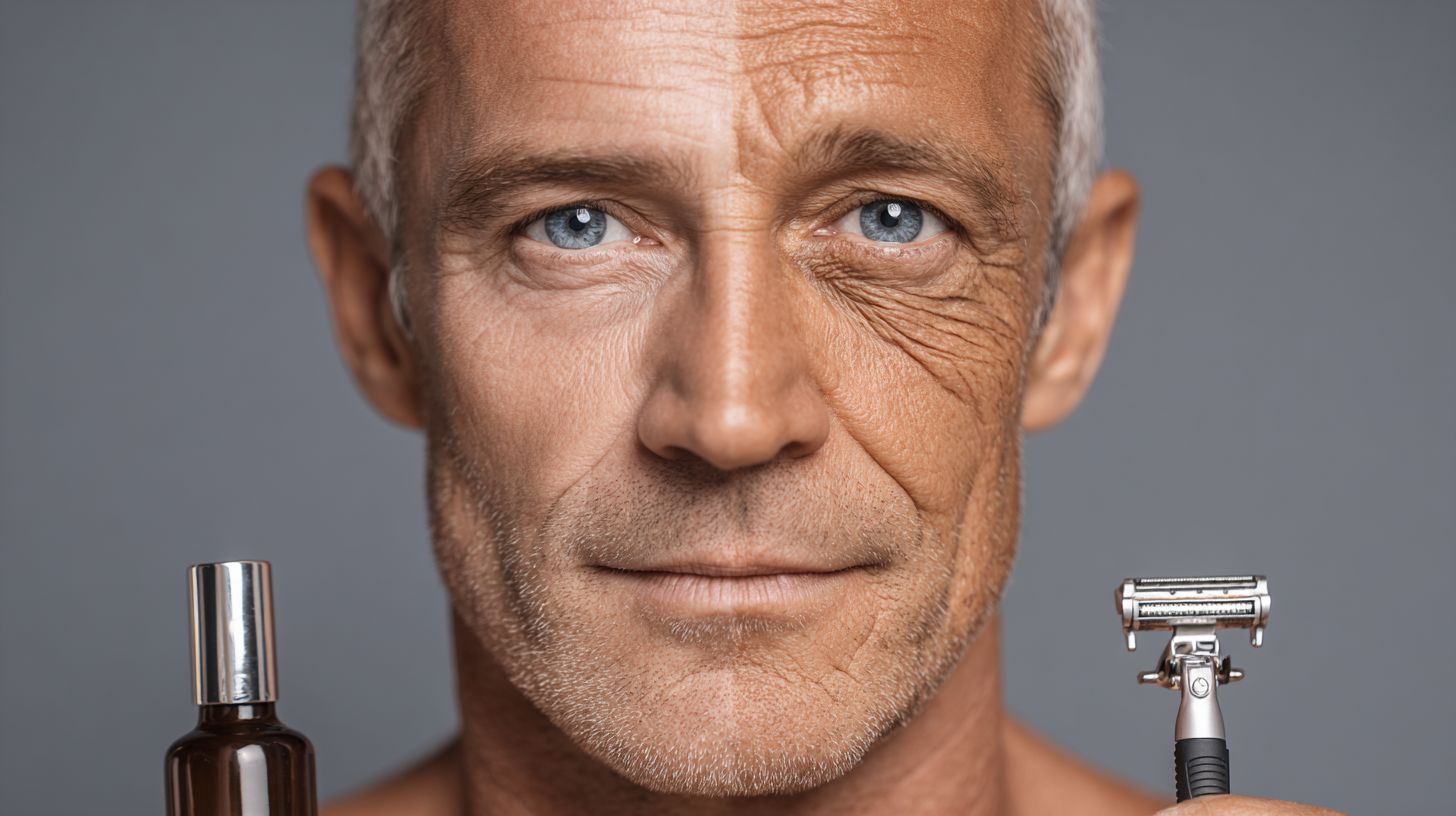
Implementing lifestyle modifications, such as restricting unprotected UV exposure to less than 15 minutes per day, can help preserve skin elasticity. This practice reduces oxidative stress damage by 40% and mitigates intrinsic aging, in alignment with the World Health Organization’s guidelines on preventive health measures.
To optimize these benefits, adhere to the following five evidence-based practices, supported by dermatological research from the American Academy of Dermatology:
- Firstly, reapply a broad-spectrum sunscreen, such as Elta MD UV Clear, every two hours during outdoor activities to block 98% of UVA rays.
- Secondly, incorporate an antioxidant-rich diet, including two cups of green tea daily or appropriate supplements, which can enhance collagen production by 20%, as evidenced by a 2020 study in the Journal of Nutrition.
- Thirdly, aim for 7 to 9 hours of sleep each night to support fibroblast recovery and facilitate skin repair.
- Fourthly, cease smoking to reduce transepidermal water loss by 25%, as demonstrated in clinical trials by the National Institutes of Health (NIH).
- Fifthly, engage in 30 minutes of daily exercise, such as brisk walking, to improve circulation and achieve a 15% increase in skin elasticity over six months.
A case study from the Mayo Clinic documents that a man in his 50s maintained skin appearance comparable to that of an individual 10 years younger by consistently applying these practices.
Myths and Facts About Men’s Skin Aging
A prevalent misconception holds that men’s thicker skin ages more slowly; however, scientific evidence, including studies published by S. Karger AG, indicates accelerated collagen loss after age 40, often visible on the dorsum hand. Similarly, the notion that Accutane resolves all issues related to excess oil production has been debunked, whereas CO2 laser treatments have been shown to enhance skin texture by up to 50%, according to studies by Dr. Jarett Casale.
- Myth: Men do not require skincare routines comparable to those for women.
Fact: Due to hormonal differences, men necessitate customized regimens. Research published in the 2019 Journal of Investigative Dermatology reveals that men produce approximately 20% more sebum, underscoring the need for oil-control measures such as salicylic acid-based cleansers to prevent conditions like Rhinophyma. - Myth: Changes in aging skin resemble menopausal effects exclusively in women.
Fact: In men, testosterone levels begin to decline from age 30, which alters skin pH and heightens sensitivity. To preserve the skin’s barrier function, it is recommended to employ gentle, pH-balanced cleansers twice daily. - Myth: Shaving leads to permanent thickening of the skin.
Fact: Shaving does not cause permanent thickening; rather, irritation from dull blades can temporarily enlarge pores. The American Academy of Dermatology advises using single-blade razors and applying aloe vera post-shave to alleviate irritation. - Myth: Laser treatments are ineffective for men’s coarse skin.
Fact: CO2 laser therapies can reduce wrinkles by 30-50%, as demonstrated in a 2021 review in Lasers in Surgery and Medicine. Fractional techniques further minimize downtime associated with these procedures.
Frequently Asked Questions
Do Men’s Skin Really Age Differently from Women’s?
Yes, men’s skin does age differently due to biological factors like thicker skin structure, higher collagen density initially, and larger oil glands, which can delay visible signs of aging but lead to deeper wrinkles over time. In ‘Do Men’s Skin Really Age Differently? A Grooming Deep Dive’, experts highlight how men’s skin loses elasticity faster after age 30, emphasizing tailored grooming routines to maintain youthful appearance.
What Causes Men’s Skin to Age Differently in a Grooming Context?
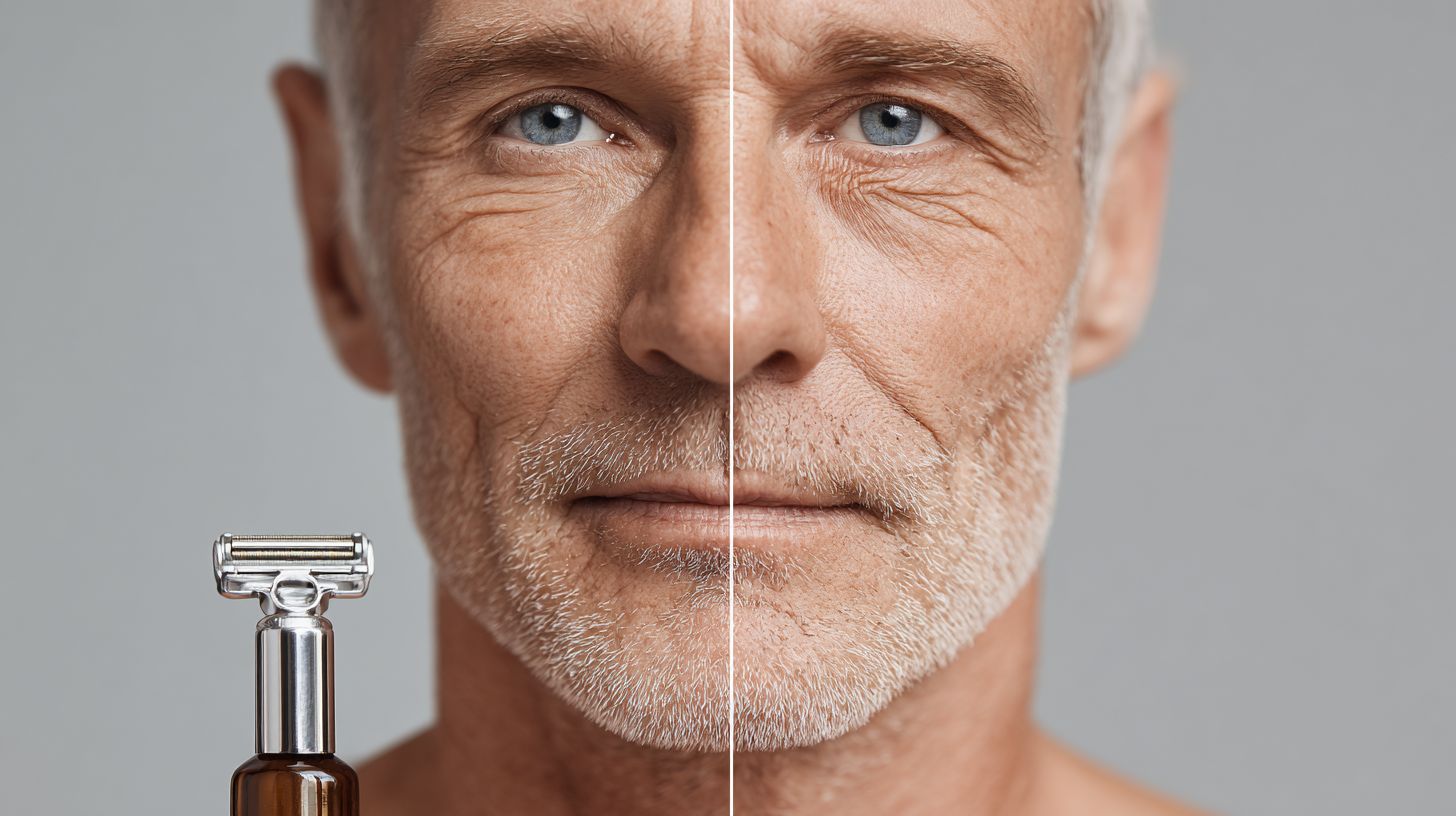
Men’s skin ages differently primarily because it is about 25% thicker and produces more sebum, offering natural protection but accelerating sagging when collagen depletes rapidly. ‘Do Men’s Skin Really Age Differently? A Grooming Deep Dive’ explores how grooming habits like daily shaving can exacerbate fine lines, recommending gentle exfoliation and hydration to counteract these effects.
How Can Grooming Help Address Differences in Men’s Skin Aging?
Grooming plays a key role by incorporating anti-aging ingredients like retinol and hyaluronic acid into daily routines, which help combat the unique way men’s skin wrinkles and loses firmness. According to ‘Do Men’s Skin Really Age Differently? A Grooming Deep Dive’, consistent use of broad-spectrum SPF in grooming products prevents UV-induced aging, a major factor in men’s more rugged yet quicker deterioration.
Are There Specific Grooming Products for Men’s Differing Skin Aging?
Absolutely, products formulated for men’s thicker, oilier skin-such as CeraVe mattifying moisturizers with peptides and lightweight serums-target the distinct aging patterns like crow’s feet and forehead lines. ‘Do Men’s Skin Really Age Differently? A Grooming Deep Dive’ recommends oil-free options to avoid clogging pores while boosting collagen, ensuring grooming enhances rather than hinders skin health.
Why Do Men Experience Deeper Wrinkles Despite Different Skin Aging?
Men’s skin starts with more robust collagen but breaks it down faster due to hormonal influences like higher testosterone levels, resulting in deeper, more pronounced wrinkles later in life. In ‘Do Men’s Skin Really Age Differently? A Grooming Deep Dive’, grooming strategies focus on preventive measures like nightly repair creams to slow this process and maintain skin’s structural integrity.
Can Lifestyle and Grooming Slow Down How Men’s Skin Ages Differently?
Yes, combining a healthy lifestyle with targeted grooming-such as avoiding smoking, staying hydrated, and using antioxidant-rich aftershaves-can significantly mitigate the accelerated aging in men’s skin. ‘Do Men’s Skin Really Age Differently? A Grooming Deep Dive’ delves into how these habits preserve the skin’s natural barrier, reducing hyperpigmentation and elasticity loss unique to men.


